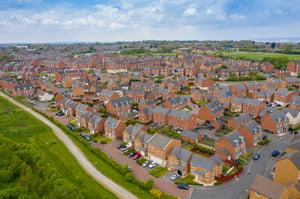Paul Brown, Head of Remote Sensing, GIS and Spatial Data Science, Fera Science
Having joined Fera nine years ago, I head up the remote sensing division within the land use and sustainability team as a Senior GI Remote Sensing Specialist and scientist and geomatic surveyor. My day-to-day role consists of land survey analysis, and engaging in extensive large-scale and topographic surveys.
sustainability team as a Senior GI Remote Sensing Specialist and scientist and geomatic surveyor. My day-to-day role consists of land survey analysis, and engaging in extensive large-scale and topographic surveys.
I’ve worked across a number of projects relating to tree and plant health, as well as mapping and measuring natural capital and biodiversity on UK farmland and country estates.
Applying our LAND360 service, we combine science and data to measure, monitor, and assess habitats and resources, and create a robust picture of natural capital and biodiversity levels.
This provides vital insights to inform sustainable land management decisions and help identify tangible biodiversity opportunities.

What will developers need to do to achieve new biodiversity net gain requirements?
Within the Environment Act 2021, the minimum 10% BNG legislation becomes mandatory in February 2024 for bigger developments and April 2024 for small sites.
A small site is defined as one to nine dwellings on an area less than a hectare, or any number of units on an area less than half a hectare.
The Natural England Biodiversity Metric tool is already being used to assess whether biodiversity net gain is being achieved. This has been identified as the standard tool all developers must use to benchmark and measure improvements to biodiversity.
The habitat that developers agree to create will be secured via a condition in their planning approval, either through a section 106 notice, or a conservation covenant, for at least 30 years.
However, there will be ways to accommodate less straight forward applications, for example, the BNG requirements can be achieved on-site, off-site or via statutory biodiversity credits.
If it’s not possible to achieve the 10% on the new build site itself, developers could approach local landowners about buying ‘biodiversity units’ they have generated through habitat creation projects, to help offset their liability.
If this still isn’t a viable option, developers will then have to buy statutory biodiversity credits from the government, but it’s worth noting this is a much more expensive option so should be a last resort.
The money raised from the sale of a statutory biodiversity credits will go towards funding larger-scale habitat creation projects.
How to purchase biodiversity credits from landowners
Landowners and farmers could benefit from the upcoming BNG legislation by creating biodiversity units that they can sell to developers.
For example, if somebody has diversified a portion of their land to create a new habitat, introducing a greater variety of flora and fauna species, this would generate biodiversity uplift.
These biodiversity units will be available to developers who are seeking to offset their development and are unable to carry it out on-site via a national register for net gain delivery sites.
When is the biodiversity net gain baseline cut-off date?
It’s important to know there’s a cut-off date for assessing your biodiversity baseline. If the area was cleared before 2020, you can assess it now in its current state to calculate your baseline. But if habitat removal has taken place since then, you have already removed all the biodiversity and cannot use this as an opportunity for BNG.
For more information on measuring the impact of these changes, and how the LAND360 team can support you in complying with the new BNG legislation, contact Fera.
More about LAND360
LAND360 is Fera's cutting-edge natural capital assessment service. Launched in 2022, it empowers farmers, landowners, estate managers, and housing developers to make informed land use decisions. By accurately measuring and mapping existing land habitat features and modelling biodiversity offerings, LAND360 is a vital tool in the quest for sustainable development and biodiversity enhancement.
